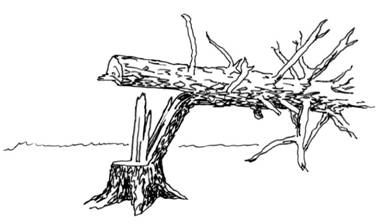spacemule
The Peanut Gallery
I've seen talk on here lately of the 1/3 rule. I must admit I've never used such a rule. I always looked closely at a tree and determined where I thought the tree would balance when placing a vertical line through it. Then, I would just make sure and place my hinge behind this imaginary line. It always worked.
With some trees, this would involve placing the hinge as much as 1/2 way into the trunk. With others, it might be as little as 1/5. Am I off base?
Don't make fun of my picture.

With some trees, this would involve placing the hinge as much as 1/2 way into the trunk. With others, it might be as little as 1/5. Am I off base?
Don't make fun of my picture.








